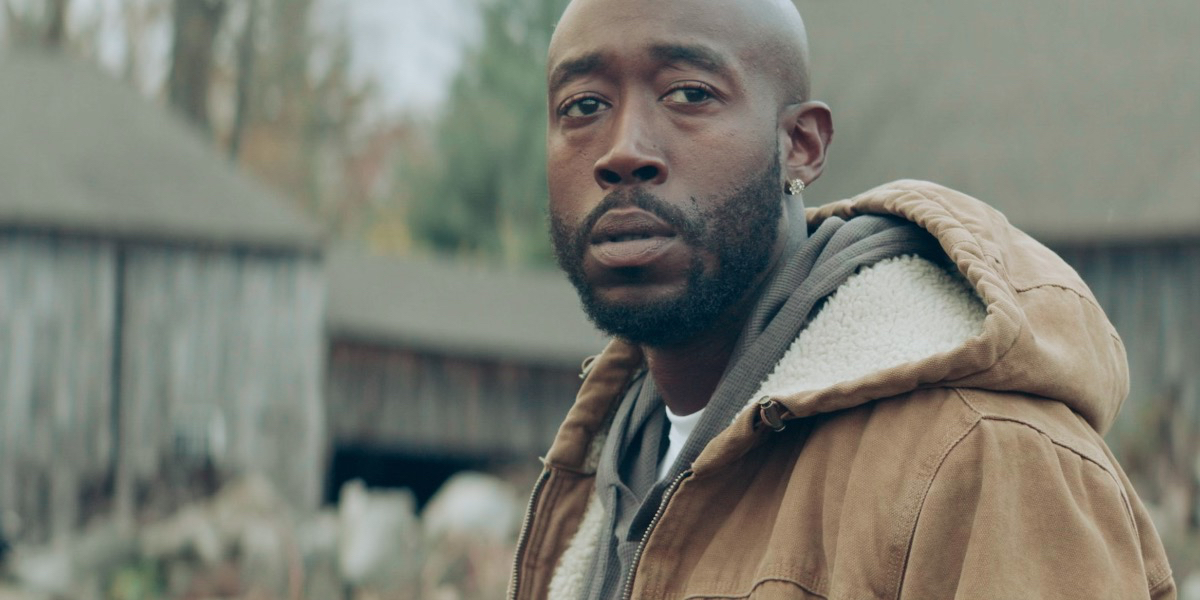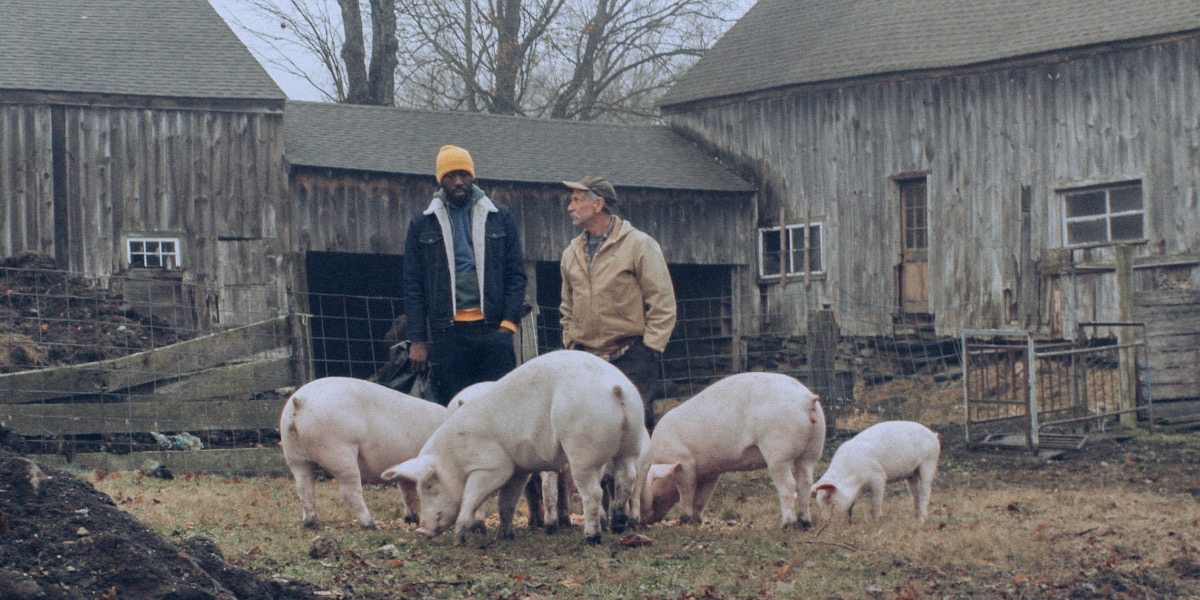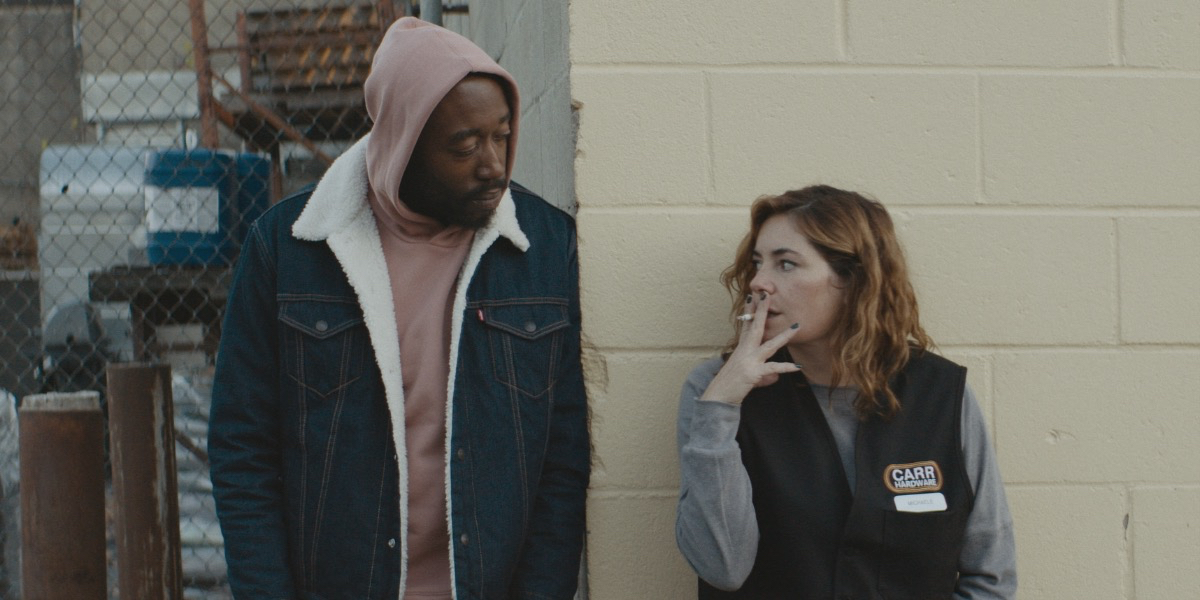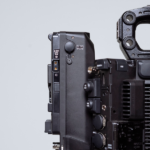
The speed of light
Posted on Sep 28, 2022
Shunning big rigs and weighty supports, DOP Danny Vecchione opted for a lighter handheld set-up on his latest movie Down with the King
Words Will Lawrence
There is a scene in Down with the King in which the hip-hop artist Money Merc launches into a freestyle rap. He begins by creating a beat deep in his throat, which gradually builds before he launches into a spontaneous set of rhymes. It is a magical moment, conjured from the mind of real-life, Grammy-nominated rapper Freddie Gibbs, making his feature film debut as an actor. It showcases not only the musician’s creative prowess, but also acts as a perfect paradigm of the filmmakers’ intent.
The movie is directed by Frenchman Diego Ongaro, and captured by cinematographer Danny Vecchione and his cameraman and long-time collaborator Connor Lawson. Ongaro shoots his movies with an almost documentary-style approach, working off a 25 to 30-page outline, rather than a script, while relying on character-based improvisation and a direct cinéma vérité feel. Gibbs’ freestyle rap is just one of many moments that blossom under Ongaro’s organic method.
“That scene was my favourite thing to shoot,” begins Vecchione, “just watching Freddie work. There were constant surprises. He doesn’t write anything down, but you can almost see the ideas going through his mind. I thought him making those beats would be the entire scene – but when he launched into that freestyle rap, it was an incredible moment. You were seeing the first step in someone’s creative process.”
The filmmakers’ creative game plan has forged something truly special – an American art house piece that feels akin to a piece of accessible European filmmaking. The rap scene lasted 45 minutes – although it was carefully edited for the feature presentation – and was made possible not only by the abilities of the artists and technicians involved, but also the equipment used.

On the Money
Down with the King was shot with just two active Blackmagic Pocket Cinema 6K digital cameras. Their size and capabilities allowed Vecchione and Lawson the freedom to execute their director’s vision, adopting an almost exclusively handheld approach. It crafts a story around the character of Money Merc (Gibbs), a famous rapper, disillusioned with the music industry. He journeys to a small-town farming community in Massachusetts to seek out the solitude he requires to reconnect to his art, and to himself.
Gibbs is not a trained actor, but neither are the majority of those who share the screen – the only seasoned professionals are Jamie Neumann, David Krumholtz and Sharon Washington. The Blackmagic 6K’s miniature size allowed the filmmakers to work with a very small footprint. So those on screen were given the freedom to find their voice, without the intimidating encroachment fostered by the sizable crew and paraphernalia required on larger-scale movies. Here, there were often more people in front of the camera than behind it.
“Diego has a specific way of making movies,” Vecchione explains. “It is difficult, but rewarding when it works. The crew is small. Connor and I had two first ACs – one for the A cam, one for the B cam – but there is no AD department, so we’re all running the set together. There is not the rigidity you normally find.
“Connor and I would have Easyrigs and could just roll into the scenes,” he adds. “Everything felt organic and relaxed, making it easier for non-professional actors.” Many of those on screen are friends of the director who live in the region. Even two of the filmmakers’ PAs get lines. “And you don’t want to freak them out with a big rig.”
Lawson adds: “With the footprint of this camera being so small, it wasn’t drawing a lot of power. Using external recorders meant recording a ton without having to reload. We were able to run around from a base camp untethered. I could run off with two batteries and shoot exterior stuff for a half a day.”
Similar, but different
Ongaro and Vecchione followed a similar path on their first collaboration together, 2015’s Bob and the Trees (shot on the Blackmagic 4K), which evolved out of a short film the director released in 2010. Down with the King and Bob and the Trees look and feel like companion pieces; the star of the latter, local farmer and woodsman Bob Tarasuk, plays a prominent role in the new film.
In many ways, Tarasuk embodies the spirit of the region in which he lives, and in which the films are made. For outsiders, New England might prompt images of beautiful towns, milling with upscale New Yorkers flitting around holiday homes. The truth is more complex. Nestled in Berkshire County, Massachusetts, around two and a half hours north of New York, the small town of Sandisfield houses Tarasuk’s real-life farm. It is a blue-collar area that relies on farming and logging for commercial viability.
“The two films do share a lot stylistically, thematically and character-wise,” Vecchione says. “Bob is the same character in both films, and it’s the same locations. So, while it is not a sequel, there is a continuation, and the thematic elements carry through.”
In Down with the King, however, Ongaro wanted to introduce an outsider into this tight-knit community, to see where it carried the narrative. Money Merc has retreated into the seclusion of the forested landscape to work on material for his next album. And yet, he finds so much more, revelling in the solitude and company of the locals, while embracing the routines of rural life.
Living through the autumnal glory of the fall, Merc slips seamlessly into his surroundings, undercutting the incongruity of a black rapper in a white, pastoral community. Amid this tranquillity, the audience feels the interconnection of landscape and man, each mirroring the other’s subtle melancholia. The film has a shadowy feel in places that reflects Merc’s state of mind, coupled with a desire to step out of the spotlight engendered by his career and big-city life.
“There is a sense of midlife crisis and mental blocks,” says Lawson, “and we lucked out with the clouds. You get a lot of mist in the mountains and it wasn’t that sunny, which was great.” Strangely, the few moments when the sun broke through coincided with the love aspect of the movie. “We also got a day of snow, which was amazing and really helped.”
Again, the Blackmagic 6K proved an invaluable tool, permitting the filmmakers to work almost exclusively with natural light, even when stretching late into the day. “I got a bit obsessed with shooting past the ‘magic hour’ and into the blue light, about 20 minutes after the sun goes down – when you get that window of nice indigo light which is literally very cool,” says Vecchione.
“I thought that type of light was very reflective of Merc’s state of mind. I wanted to get in as many of those scenes as possible. Although it’s a beautiful time of day to shoot, it’s extremely hard to do, but these small-footprint cameras and the rigs that Connor figured out in prep definitely helped.”

Gloom, not doom
“We were using the idea of natural light to our advantage from a character standpoint,” he adds. “Hopefully, it doesn’t look underlit, although certain scenes are underexposed and dark.” A prime example is when Merc plays the piano in his wooden mansion. “Certain scenes have a gloom to them, which is beautiful, and that was one.”
Again, the Blackmagic 6K came into its own with a dual base ISO that can go very high, with around 13 stops from white to black, making it ideally suited to Ongaro’s style of filmmaking – a reliance on natural light. “There are two native settings you can go with,” says Vecchione. “When it’s bright and sunny, shoot at IS 400; and then if it’s really dark, ISO 3200.
“High ISO lets us lean heavily into that. We had to light party scenes, but otherwise we were way up on ISO and shooting stuff that wouldn’t be possible with the more standard base of, say, ISO 800. Combined with dynamic range, we captured what we needed and sculpted in post.”
Another welcome feature was the camera’s ability to carry an anamorphic lens. Ongaro and Vecchione were keen to employ an anamorphic feel. “It did a lot for the look of the film and add a subliminal layer to Money Merc’s character,” the cinematographer says.
“The 6Ks have a 3.7K anamorphic in-camera mode. There’s a limited number of small cameras on which you can use an anamorphic lens. The Atlas Orion we liked has an EF mount, so it fits straight on the camera.
“Shooting this way was a lot of work,” Vecchione concludes. “But it was a project I wanted to do for the love of filming, like the fun you had when making movies in college. A wonderful experience.”
Down with the King is available on multiple streaming platforms.
Appears in the October 2022 issue of Definition. Read the full magazine here.







